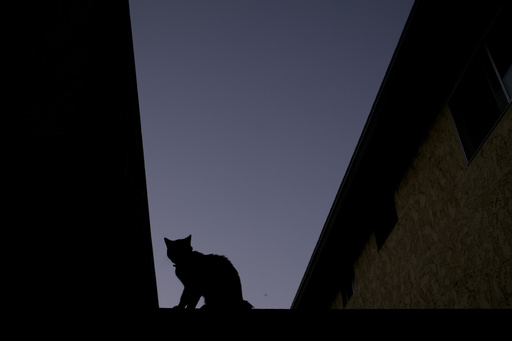
Two cats owned by dairy farm workers in Michigan have passed away after contracting the bird flu, according to recent findings. However, the specifics surrounding how these pets became infected, as well as whether the virus can be transmitted to humans, remain uncertain, as highlighted in a new study released by the Centers for Disease Control and Prevention.
Veterinary specialists have pointed out that the information included in the report falls short of confirming any instances of the virus being transmitted from humans to cats or conversely. Dr. Diego Diel, affiliated with the Cornell University College of Veterinary Medicine, expressed skepticism regarding the conclusions drawn from the data. He stated, “I don’t think there is any way of concluding that there was human-to-cat transmission based on the data that is presented.”
The unfortunate incidents occurred in May when two cats, solely kept indoors, fell seriously ill and were found to have contracted the H5N1 bird virus, commonly associated with outbreaks in U.S. dairy herds. Importantly, these cats had no direct contact with infected livestock or birds and did not consume raw milk.
One of the deceased cats belonged to a dairy farm worker in a region known for avian flu in local cattle. This worker exhibited signs of illness before the cat became ill, leading to the cat testing positive for H5N1 and ultimately being euthanized. Another cat from the same household developed symptoms but managed to recover, and a third cat did not show any signs of sickness and tested negative for the virus.
In another household, a different cat succumbed to the virus. The owner, who worked in the dairy industry and often transported raw milk, reported frequent splashes of milk onto their face and clothing. Notably, this worker experienced eye irritation just days before their cat fell ill. This cat rolled in the worker’s soiled clothing and died shortly after developing infection symptoms. Another pet in the same household tested negative for H5N1.
Despite the circumstances, both dairy workers opted not to undergo testing for the H5N1 virus. Dr. Keith Poulsen, who directs the Wisconsin Veterinary Diagnostic Laboratory, noted that this makes it impossible to determine if they directly passed the virus to their cats. Instead, he suggests that the animals may have contracted the virus from surfaces on the workers’ clothing, boots, or hands. He commented, “We know that people at this point are not shedding large amounts of virus…I don’t think it’s because this person coughed on their cat.”
The research indicates that while cases of bird flu in domestic cats are uncommon, the potential for such cats to pose a risk of human infection should not be overlooked. Since the deaths of these cats, instances of domestic felines contracting and succumbing to bird flu after consuming unpasteurized milk or contaminated pet food have also been reported.
The findings from this study point to the necessity for more rigorous testing for H5N1, according to Dr. Poulsen, emphasizing the importance of comprehensive monitoring across various sectors.

